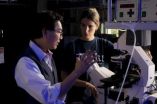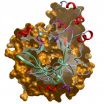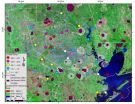(Press-News.org) CINCINNATI—Firefighters are exposed to potentially dangerous levels of ultrafine particulates at the time they are least likely to wear protective breathing equipment. Because of this, researchers believe firefighters may face an increased risk for heart disease from exposures during the fire suppression process.
Coronary heart disease is the No. 1 killer of American firefighters, with many of these incidents taking place during or just after a firefighting incident. Researchers say exposure to these harmful ultrafine air particulates could predispose firefighters to heart disease—particularly in those at a less-than-optimal level of physical fitness or personal health.
In a study conducted collaboratively by the University of Cincinnati (UC), Underwriters Laboratories Inc. and the Chicago Fire Department, researchers have found that more than 70 percent of particulates released during fires are "ultrafine," invisible to the naked eye but able to be inhaled into the deepest compartments of the lung.
These findings were reported in the August 2010 issue of the Journal of Occupational and Environmental Medicine. This study was the first to characterize the size and distribution of particulates, including those in the ultrafine range, during domestic fires.
For this study, researchers conducted a series of simulated house and automobile fires to measure the amount and specific characteristics of breathable particulates released during combustion and, consequently, what firefighters are exposed to during the course of their typical work environment.
Fire suppression takes place in two phases. In the first, known as "knockdown," firefighters squelch the flames with water to avoid fire spread. Workers are required to wear protective breathing equipment during this time to avoid exposure to smoke and toxic gases produced from the process. During "overhaul," the second phase, firefighters enter the structure and work to prevent re-ignition of partially burned material.
Researchers found that levels of ultrafine particulates were highest during overhaul, both in indoor and outdoor structure fires as well as automobile fires.
"Firefighters simply can't avoid inhaling these ultrafine particles when they are not wearing their protective breathing apparatus and, unfortunately, they routinely remove it during overhaul," explains Stuart Baxter, PhD, a collaborator in the study and UC professor of environmental health.
"Standard issue firefighting equipment weighs about 60 pounds, and under the exertion of firefighting the standard air tank only lasts about 20 minutes, so as soon as they determine the situation is safe—typically during overhaul—firefighters shed the protective gear," he adds. "Much of this ultrafine exposure could be avoided through equipment improvements and more rigid safety protocols for fire suppression—including additional workers who could be rotated in to reduce the physical and emotional burden of the job."
INFORMATION:
Collaborators in the study include Clara Sue Ross, MD, JD, Thomas Fabian, PhD, Jacob Borgerson, Jamila Shawon, Pravinray Gandhi, PhD, James Dalton and James Lockey, MD. Funding for the study came from the Department of Homeland Security and AFG Fire Prevention and Safety Grants Program. Funders had no involvement in study design, data collection/analysis, writing of the paper or decision to seek publication.
Lockey has served as a paid witness, independent medical examiner or both in workers' compensation and disability cases, including cases involving firefighters. There is no other potential conflict of interest relevant to this research.
END
PHILADELPHIA (September 28, 2010) – Scientists at the Monell Center have used a well-known example of individual differences to identify a genetic contribution to the sense of smell.
Most people detect a distinct sulfurous odor in their urine shortly after eating asparagus. However, there are some who seemingly do not notice the unpleasant odor.
Up until now, it has been unclear whether this is because these individuals do not produce the odor or because they cannot smell it.
Addressing this mystery from several angles, scientists from the Monell Center first used ...
HIV-infected individuals who begin antiretroviral therapy (ART) soon after acquiring the virus may have stronger immune responses to other pathogens than HIV-infected individuals who begin ART later, a new study from the National Institutes of Health has found. This finding suggests that early initiation of ART may prevent irreversible immune system damage and adds to the body of evidence showing significant health benefits from early ART.
Scientists from the National Institute of Allergy and Infectious Diseases, part of NIH, measured the quantity and qualities of B cells ...
Dairy farmers can greatly reduce ammonia emissions from their production facilities by injecting liquid manure into crop fields below the soil surface, according to research by the U.S. Department of Agriculture (USDA).
These findings, which resulted from a study conducted by soil scientist April Leytem and agricultural engineer David Bjorneberg with USDA's Agricultural Research Service (ARS), could help Idaho dairy farmers increase nitrogen capture in the soil and protect air quality from agricultural ammonia emissions. ARS is USDA's principal intramural scientific ...
DURHAM, N.C. – Duke University bioengineers have not only figured out a way to sneak molecular spies through the walls of individual cells, they can now slip them into the command center -- or nucleus -- of those cells, where they can report back important information or drop off payloads.
Using silver nanoparticles cloaked in a protein from the HIV virus that has an uncanny ability to penetrate human cells, the scientists have demonstrated that they can enter the inner workings of the nucleus and detect subtle light signals from the "spy."
In order for these nano-spies ...
A study conducted at Copenhagen University Hospital showed that treatment of rheumatoid arthritis (RA) with disease modifying antirheumatic drugs (DMARDs), glucocorticoids, biologic agents, or a combination of agents significantly reduced radiographic evidence of joint destruction, with a relative effect of 48%% as compared with placebo. A direct comparison between the combination of a biologic agent plus methotrexate and the combination of 2 DMARDs plus initial glucocorticoids revealed no difference. Study findings are published in the October issue of Arthritis ...
Social rejection isn't just emotionally upsetting; it also upsets your heart. A new study finds that being rejected by another person makes your heart rate drop for a moment. The study is published in Psychological Science, a journal of the Association for Psychological Science.
Research has shown that the brain processes physical and social pain in some of the same regions. Bregtje Gunther Moor, Eveline A. Crone, and Maurits W. van der Molen of the University of Amsterdam and Leiden University in the Netherlands wanted to find out how social pain affects you physically. ...
Results from a 12-month multi-center clinical trial did not show therapeutic benefit of abatacept over placebo in patients with non-life threatening systemic lupus erythematosus (SLE). Abatacept failed to prevent new disease flares in SLE patients tapered from corticosteroids in an analysis where mild, moderate and severe disease flares were evaluated together. Full details of the phase IIb clinical trial are published in the October issue of Arthritis & Rheumatism, a journal of the American College of Rheumatology (ACR).
The ACR estimates that 161,000 to 322,000 adults ...
The Structural Genomics Consortium (SGC), an international public-private partnership that aims to determine three dimensional structures of medically important proteins, announced today the release into the public domain of its 1000th high resolution protein structure.
The 1000th structure – known as JmjD2C – belongs to a class of proteins involved in epigenetic signalling, a key research area for the SGC. Epigenetics is the study of inherited changes in gene expression caused by proteins such as JmjD2C which 'switch' genes on or off. It is believed that a better understanding ...
HOUSTON, Sept. 28, 2010 – A large section of northwestern Harris County – particularly the Jersey Village area – is sinking rapidly, according to a University of Houston (UH) geologist who has analyzed GPS data measuring ground elevation in the Houston area.
Some points in Jersey Village are subsiding by up to 5.5 centimeters (about 2 inches) a year, said Shuhab Khan, an associate professor of geology at UH. Khan, along with UH geology professor Kevin Burke and former Ph.D. student and UH alumnus Richard Engelkemeir, studied a decade's worth of detailed GPS data measuring ...
In comments sent to Secretary Kathleen Sebelius at the U.S. Department of Health and Human Services, AMIA (American Medical Informatics Association) called out 10 specific challenges to proposed modifications to HIPAA Privacy and Enforcement Rules. AMIA's comments, sent on behalf of its membership of 4,000 informatics professionals, detail key issues of concern related to the Notice of Proposed Rulemaking (NPRM) on HIPAA modifications, along with suggestions for models of change. The following areas were cited:
Business Associates and Subcontractors
Position: AMIA ...


